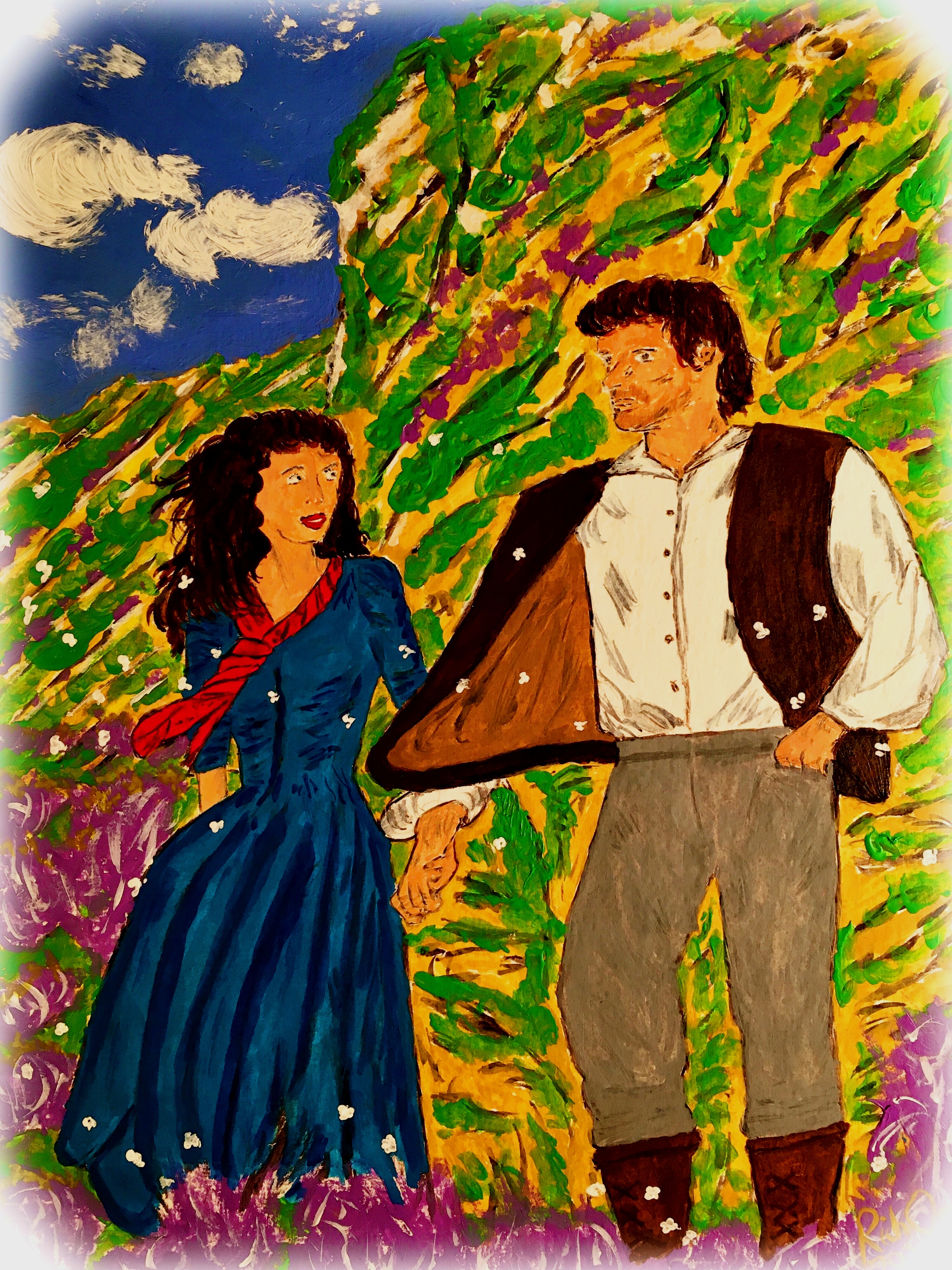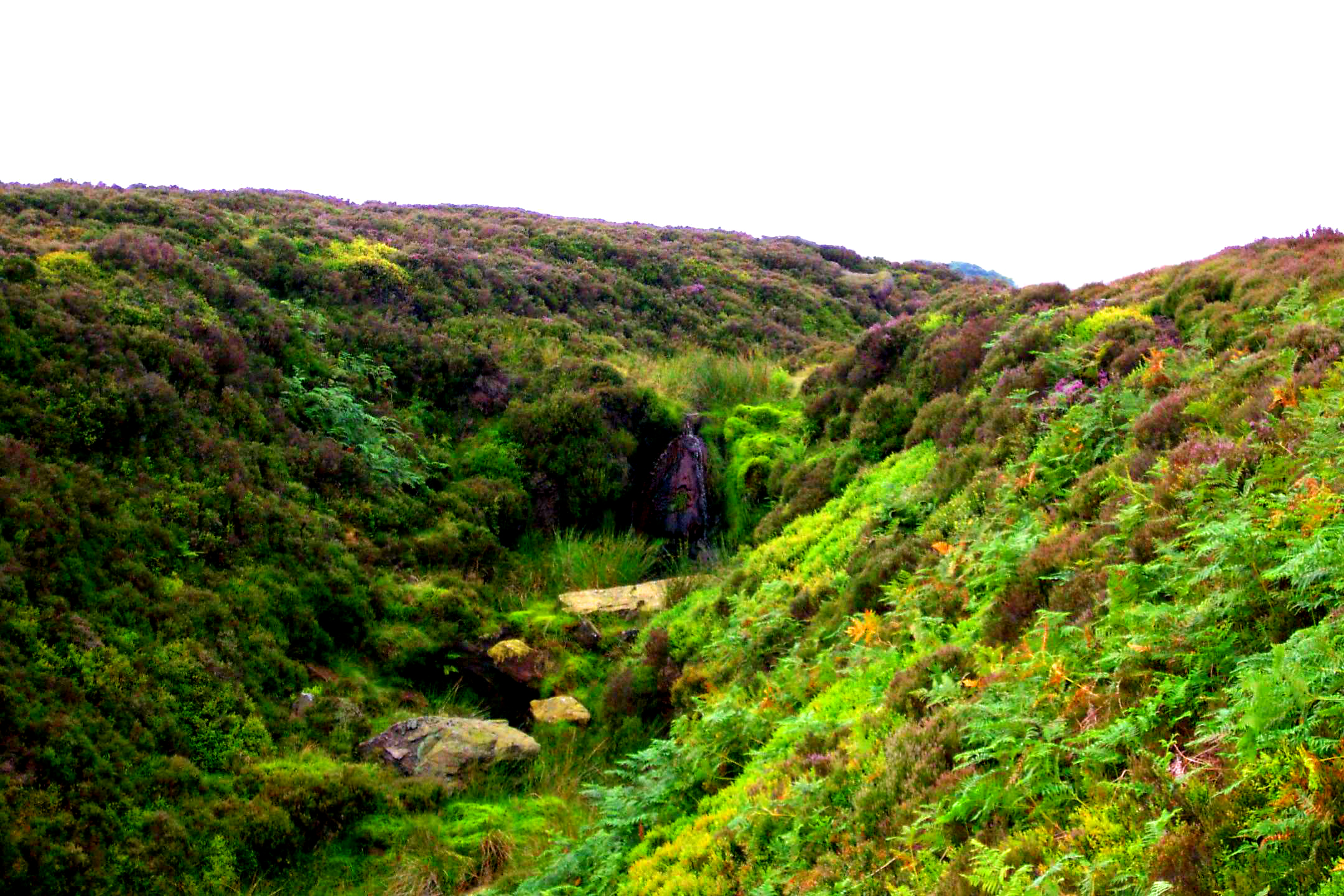In Search of Wuthering Heights
by Richard Ong
I remember the endless sea of grass dotted with wildflowers amidst a purple wave of heather swaying under intermittent gusts of wind. The golden orb of the sun above blinded me momentarily along with the stinging sweat on my eyes. I lost my balance and scraped my arm as I attempted to break my fall from the low stone wall where I had stood moments before while trying to get my bearings.
The Pennine Moors of West Yorkshire, England, was a vast, wild and uneven terrain of hills and dangerous rock formations. Not surprisingly, this place was home to Emily Bronte, whose daring and uncompromising novel, Wuthering Heights, helped inspire generations of readers and writers alike for nearly two centuries. I wanted to trace her footsteps and experience the same wildness of the Yorkshire moors that spawned the kind of writing that blatantly challenged Victorian sensibilities.
* * *

Haworth Parsonage |
“Welcome to the Bronte Parsonage Museum,” a middle-aged woman had said to me and smiled when I walked through the two-storey Georgian building the day before. She waited while I marvelled at the realization that I had finally set foot inside the home of one of my favourite classic literary authors.
“I made it, Emily,” I whispered.
“Pardon?” asked the lady standing behind the desk where I paid the entrance fee.
I smiled and took my receipt. “I’m sorry. My mind must’ve wandered. This is in many ways a fulfillment of a dream for me, so you’ll forgive me if I take a moment to absorb the atmosphere of this place.”
“I hope that you enjoy your self-guided tour of the place. Feel free to ask any of our historic interpreters for any questions that you might have,” she said.
As if in a daze, I made my way through the older part of the house. From a narrow hall to my right was the Reverend Patrick Bronte’s study where he must have prepared all his sermons for the church and taken solace from the stress of raising four children into adulthood. A tall cottage piano with two foot pedals stood against one wall. Emily played this piano more than her other two fellow novelist sisters, Charlotte and Anne.
I continued my tour through the rest of the Bronte Parsonage Museum, savoring the visual experience of being inside each room, pretending that I could hear the busy household full of imaginative children creating a world in their early stories that were filled with adventures from places called Gondal and Angria.
As they matured into adulthood, the realities of hard living transformed their stories into poems and novels that reflected their individual passions and experiences. The dining room, located on the opposite side of the hall across Patrick Bronte’s study, was also the very same room where Jane Eyre and Agnes Grey and Wuthering Heights were written. The three sisters would walk and read each other’s work around this table in candlelight and also discuss family matters, such as their father’s failing eyesight and their brother Branwell’s spiralling addiction to alcohol and opium.
Towards the end of my tour, I smiled when I saw the bonnet that Charlotte wore on her wedding day to her father’s curate, Arthur Bell Nicholls.
And then I winced at the sight of the black hat and veil that Charlotte wore at Emily’s funeral, a mere three months after their brother Branwell’s death.
Emily was only thirty when tuberculosis took her life in 1848. The sofa where she breathed her last was a permanent fixture of the Parsonage dining room. I could almost see her struggling to get up in order to walk out of the house as Charlotte and Anne looked at her prostrate form in helpless despair.

Heathcliff and Cathy appears in issue 902. |
In my imagination’s eye, I took hold of Emily’s disembodied hand and invited her to get up from the sofa to join me for a walk in the wilds of the moors. I wanted so much to see what she saw, breathe the air that she breathed, and discover the origins of Heathcliff and Cathy.
* * *
The events of the day before became a blur in my memory when I remembered where I was, lying face up on the unforgiving moorland with not a soul in sight. My arm was bruised from the fall but my injury was minor. It was more of a shock than anything else. I got up, dusted myself and started walking towards the signpost I had spotted while I was perched above the stone wall.
Using a local walking map as a guide, I followed the arrow-shaped sign pointing in the direction I wished to go and stayed on the public walkways until the downhill walk became treacherous with no discernible path. If there was one, it had long been swallowed up by the grass and heather. For about an hour and a half, I made my way down towards the direction of a rocky valley where Emily and her siblings used to tell stories and expand their imaginations in order to escape the realities of their hard life. It was their playground, where they could pretend to be anyone they wished to be.

Yorkshire Moors |
Along the way, thousands of sheep grazed along the hilly moors and grassland. Haworth Moor loomed to the south on my left, whereas the Lower Laithe Reservoir revealed a spectacular view of Stanbury Village on the right towards the north. I continued to tip-toe my way along the caked, muddy footpath, passing endless sheep and sidestepping their black droppings.
While I was hiking down a steep ravine, flies and numerous other tiny biting insects swarmed endlessly around me. Twice I almost lost my footing while trying to wave the little buggers away.
The valley below was an oasis in the middle of the arid moorland. A babbling brook cascaded down a long slope of rocky steps. The water originated from a small waterfall that ran down from one of the valley’s highest hills. A small stone bridge crossed the brook. The original was destroyed in a flash flood in 1989 and rebuilt in 1990.
I sat down to rest and drink from my water bottle on what I thought was “Emily’s Chair,” a slab of stone shaped like a chair where Emily Bronte supposedly sat to gather her thoughts. But after reviewing my notes, I realized that it was the wrong chair! The real chair was located on the east side of the stone bridge. The chair I sat on was on the west side. I made a mental note to come back another day to pay my respects. I decided to press on, as I still had a long way to go.
I crossed the stone bridge and hiked up the hill on the opposite side of the valley. For the next two hours, I saw more sheep as the gradient path continued to rise.
Along the way, I met a couple of local gentlemen and spoke to them for a bit while I rested. They were doing their regular Wednesday walk. I pointed out that it’s only Tuesday. One man pointed to the other and said, “It’s his fault.” I told them that I came from Canada and they remarked that the Canadian accent is softer. How did I manage to understand the Yorkshire accent, which they admitted was harsher?
The younger of the two gentlemen mentioned that there were two sheep at the summit. They found it strange that these wild sheep behaved differently and did not avoid people as they normally would. I joked that perhaps they’re Heathcliff and Cathy, and that they’re not afraid of anyone. They both laughed and nodded while the older gentleman said, “Yes, it’s them come back to life!”

Top Withens |
After hiking uphill for another half-hour, I finally reached the ruins of an old stone farmhouse called, Top Withens. According to Ellen Nussey, a close friend of Charlotte, the Top Withens farmhouse was an inspiration for Wuthering Heights. Although the structure looked nothing like the Earnshaw manor described in the novel, its desolate, windy location high up on the hill must have been enough to nurture the idea to Emily’s fertile imagination.
I turned around and noticed that there were two adult sheep just sitting under the great old tree across the farmhouse. I felt a breeze and thought I saw a shadow descend upon the two sheep.
“Dear Emily,” I thought, “you are finally home.”
* * *
Three days later, I returned to the valley near the falls and planted a pink rose across Emily Bronte’s stone chair. I looked for a soft spot on the valley ground and dug at least half an inch of earth out of the way using a sharp stone. I couldn’t dig any deeper due to the rocky bedrock underneath. I stuck the rose into the ground facing the left front of the chair and propped up the stem with a pile of pebbles around the base. I emptied a water bottle and drenched the base of the plant. Years from now, would the rose still be there?
I could only hope for a miracle. It was July 30th after all. Emily’s birthday.
Copyright © 2021 by Richard Ong
